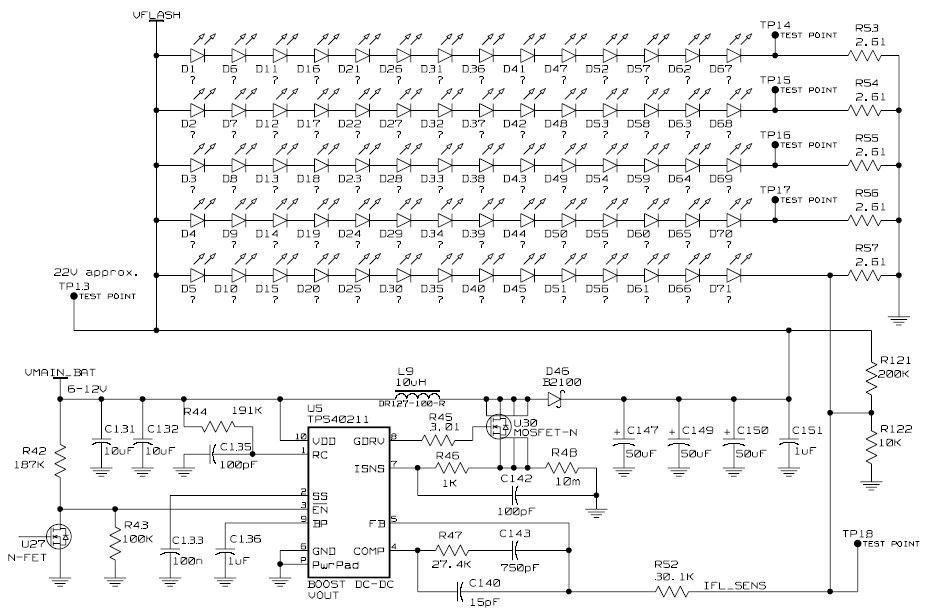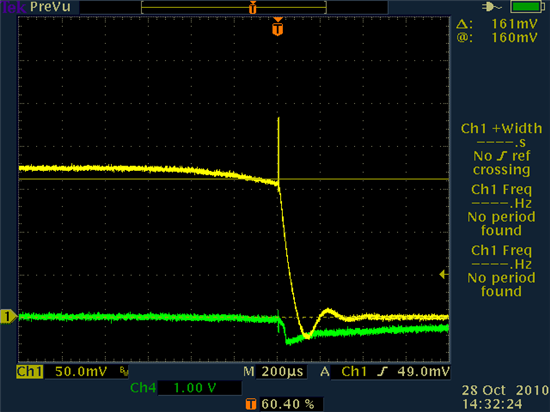We have the following circuit
There is one small change to the schematic: R48 (Rsns) was changed to 15mOhm. R121 and R122 are there is case there is no load (LEDs) connected.
For some reason this circuit keeps blowing a 5A fuse on our board. It works for a few seconds and then blows the fuse.
We looked at the voltage across Rsns ad it is around 50mV while the circuit is working. Then, it goes up to 150mV and then shortly after (within a second) blows the fuse.
Update:
Here is a waveform of the voltages on the MOSFET Gate and across RISND right before the fuse blew.

Yellow is V on Rsns and Green is V on the gate of MOSFET.
Why is the circuit blowing the fuse? Is my MOSFET gets stuck on? Why?

